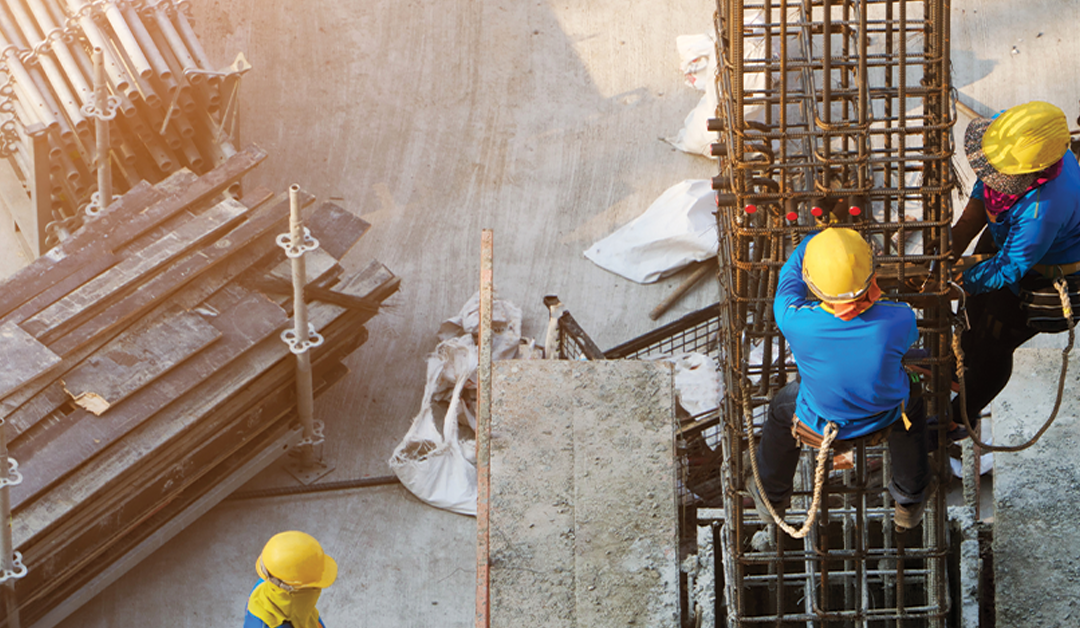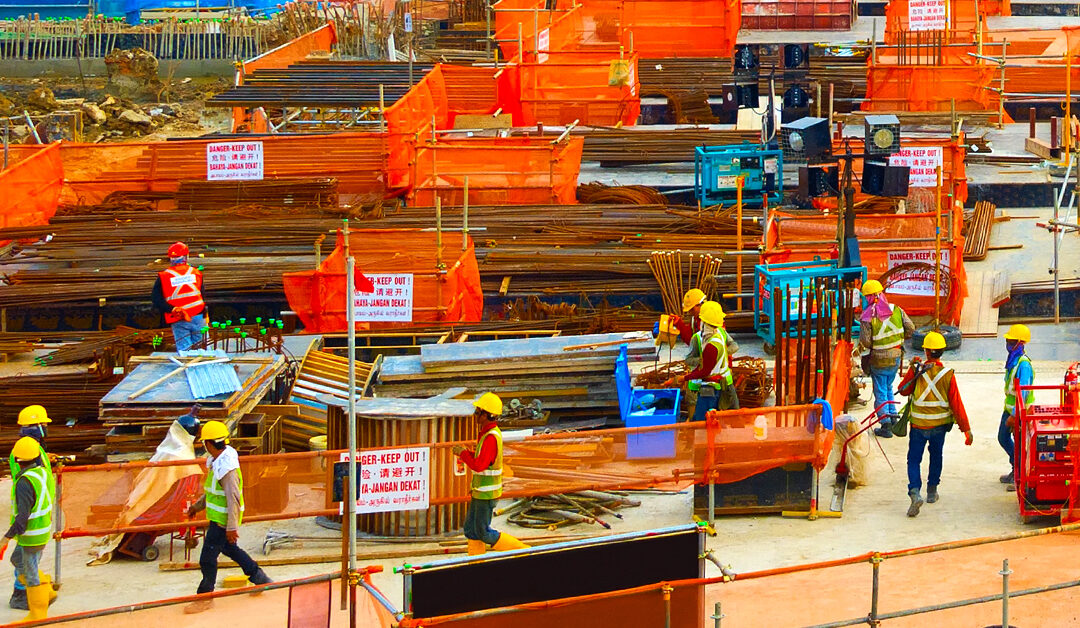Making sense of all of your data from all of your projects can feel like trying to understand a foreign language. But, when we break it down into steps, it starts to make a lot more sense.

- News
The Future of Construction Scheduling
Within the world of construction, where time, cost, and quality are the three fundamental pillars for project success, one critical aspect has remained surprisingly resistant to change: scheduling. While the construction industry has seen remarkable technological advancements, scheduling processes have largely clung to traditional methods, making the future of construction scheduling top of mind. Typically confined to office spaces, modern schedules eventually end up on job sites with limited communication and collaboration.
At last week’s Groundbreak event, hundreds of industry experts gathered to share their insights and collaborate towards building a better future in construction. This session emphasized how Procore, Outbuild, and SmartPM work together to improve scheduling, project management, and collaboration in the construction industry. Moderated by Hamzah Shambari, Director of Innovation at The Haskell Company, the conversation featured prominent voices in the construction tech landscape. Our panelists include Matt Baum, Procore’s Principal Product Manager; Franco Giaquinto, the visionary CEO and Founder of Outbuild; and Michael Pink, the driving force behind SmartPM as its Founder and CEO.
What is Construction Scheduling, and Why is it Important?
“CPM scheduling organizes our thought processes and imposes order on project timelines. It helps determine the sequence of tasks, dependencies, and the time available to meet the project’s completion date and budget. Without a scheduling tool, projects become riddled with risks,” remarked Michael Pink. “The schedule is not only the most important data set in construction, it is also the most useful for keeping on budget and on time.”
But, as stated by Franco Giaquinto, “As of now, a lot of things have improved in construction with technology. But, the schedule has remained the same. We are still using the same processes on the same platforms. The scheduler creates a schedule in an air-conditioned office and hands it off to the job site to determine its meaning.”
Luckily, the tide is finally shifting for construction scheduling, with companies like SmartPM, Outbuild, and Procore coming together with one unified vision.
“There is so much room for improvement in the industry due to the lack of innovation in the schedule over the last 60 years. It is our obligation to take that step for you all,” said Baum.
Challenges in Modern Scheduling
The creation of construction schedules often happens in one of three ways. First involves relying solely on someone in the office (i.e., schedulers) to create and update schedules, a process that sometimes lacks a deep understanding of on-site activities. The other approach is entrusting someone on-site (i.e., project managers) with scheduling responsibilities, which can lead to misunderstandings about the intricacies of CPM scheduling. Another avenue is a hybrid of the two or hiring a third-party consultant.
“There is a big collaboration factor here that is missing,” stated Giaquinto. “You can’t just build a schedule; send the job site a .xer file and tell them to figure it out. We are trying to bridge that contractual schedule to what is going on in the field every single day.”
And that is precisely what Outbuild has set out to do: break the isolated silos. Lean and last planner scheduling methods are used on job sites daily via sticky notes and whiteboards. These methods just lack integration with legacy scheduling tools.
“We need a more connected approach where planning on-site, often done with sticky notes and whiteboards, actively impacts and updates the schedule. This integration brings significant value to the CPM schedule through flexibility, proactiveness, and continuous progress,” continued Giaquinto.
And he’s right. The future of construction scheduling certainly requires a harmonious blend of collaboration and technology integration, which is exactly where Shanbari takes the panel next.
Enhancing Transparency and Collaboration
Over and over again, construction projects have different versions of the same schedule. One is for the owner, one is for trade partners, and the actual truth is not shared with anyone. Owners want to be on time. Trade partners often believe they need to catch up. The truth is likely somewhere in between.
Transparency sets the level, but it is hard to come by in today’s construction industry.
“We see a few companies being transparent. When they are, the outcome is better. The only way to accomplish a good project and have everyone happy about it is when everyone has transparency.” – Matt Baum.
This issue is something Pink noticed when developing his own product:
“What we found with owners is all they ever want is to know sooner. They have a plan, with a financial model behind it, to have an asset ready. If, for example, they could have known there was a problem eight months earlier, they could have changed their whole business plan and finished three months later without financial implications.”
Transforming legacy scheduling tools into valuable resources to assist field personnel actively requires effective collaboration and transparency. The sooner everyone is on the same page, the better project outcomes are.
“Improving scheduling and planning involves three key factors: collaboration, seamless data flow, and analytics for continuous improvement. Many companies possess valuable data from numerous projects but fail to utilize it effectively. Managing this data requires better processes to gain valuable insights.” – Franco Giaquinto.
Schedule Data: The Missing Link
One recurring challenge in the industry is the clash of opinions, often arising when doubts are expressed about the timeline. These situations typically lead to impromptu debates where experience clashes with instinct. The missing link in these disputes is concrete data that can confirm or refute claims.
“Until you slap the data down, nobody will listen. However, this data has to be very clear, understandable, and uniform across multiple people’s capabilities of understanding data.” – Michael Pink.
As explained by Pink, when data is distilled into accessible formats that resonate with all stakeholders, it becomes a potent tool for identifying areas of improvement and potential challenges. Executives and on-site teams can collaborate effectively when they share a common language, discuss areas that require acceleration, pinpoint unfeasible changes, and project realistic project completion dates.
By championing the use of clear, comprehensible, and standardized data, executives can bridge the gap between technical intricacies and practical decision-making, steering the industry towards greater efficiency, accountability, and success in the construction scheduling landscape of the future.
The Future of Construction Scheduling
So, what exactly is the future of construction scheduling? According to Baum, the future of construction scheduling involves a harmonious blend of collaboration and technology integration driven by data and analytics to improve project outcomes and overall efficiency.
When asked about Procore’s role, Baum’s response summed it up perfectly.
“For us, it is how we help tools like SmartPM and Outbuild by providing the data and letting them round trip it on their next project to inform future builds. There is so much opportunity to utilize the data we never had access to or didn’t know how to use. There is a lot for us to learn. But, for Procore, there is an opportunity to be an assistant to you rather than trying to tell you how to build a project.”
What About AI?
While AI is a promising technology, it’s vital to move in step with the industry’s needs and not rush into advanced solutions that may go unused. The next level in construction scheduling involves collaborative, web-based products that facilitate data flow between projects.
“I do not see the near future being super advanced AI that can produce accurate schedules at once. That is not the right approach. But, using AI as an assistant can give you the insights to push data back and forth. For example, having AI to inform you about subpar performance or a potential roadblock from an upcoming activity can be very powerful. Between us three companies, this is something you will be able to see very soon.” – Franco Giaquinto.
AI as an Assistant
As noted by Giaquinto, AI’s role in construction scheduling is not replacing human expertise but acting as a valuable assistant. Pink continued about the near future of these advancements:
“One area where AI shines is in improving schedule quality. Construction scheduling is a multifaceted process that demands meticulous attention to logic, durations, trade flows, crew allocations, and resource constraints. Many professionals find it time-consuming and complex to handle manually.
AI can quickly analyze vast amounts of schedule data to derive valuable insights, helping streamline and optimize the schedule creation process. AI’s analytical capabilities can also craft realistic acceleration plans, considering factors like compression numbers, calendars, trade flows, resource constraints, and seasonal variations.
This approach optimizes budgets and ensures projects stay on track. In essence, when thoughtfully integrated into construction scheduling, AI can elevate the industry to new levels of efficiency and collaboration. We’re all collectively working toward this future.”
The Power of Collaboration and Innovation
In conclusion, collaboration, transparency, and AI integration are guiding the future of construction scheduling. Cooperation among stakeholders and technology transforms scheduling into a more efficient and effective process. The companies in this panel are collectively working toward this future, where innovation and collaboration will drive success and lead to better project outcomes for all involved parties.
“The future is now. The future is a collaboration between different groups that are making it easier for the construction industry to collaborate.” – Hamzah Shanbari, Director of Innovation at Haskell.
RELATED STORIES

Making Construction Data Analytics Easier to Understand
Making sense of all of your data from all of your projects can feel like trying to understand a foreign language. But, when we break it down into steps, it starts to make a lot more sense.

Overcoming Confirmation Bias in Construction Project Management
Confirmation bias can be particularly problematic in project and schedule management, where decisions must be based on accurate and comprehensive information.

Top Construction Scheduling Software in 2023
SmartPM’s recognition as a top construction scheduling software in 2023 attests to the immense value in automated project controls.

Putting the ‘Smart’ in Project Management with Project Controls
Project controls are not just a subset of project management; they are its backbone, focusing on meticulous monitoring and analysis.

